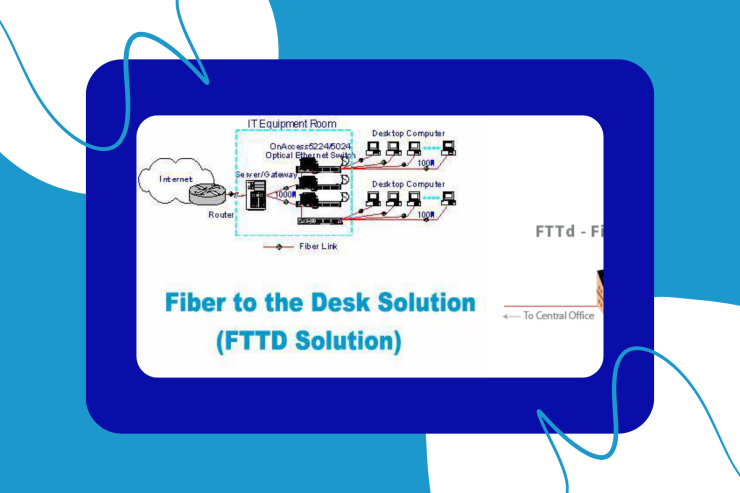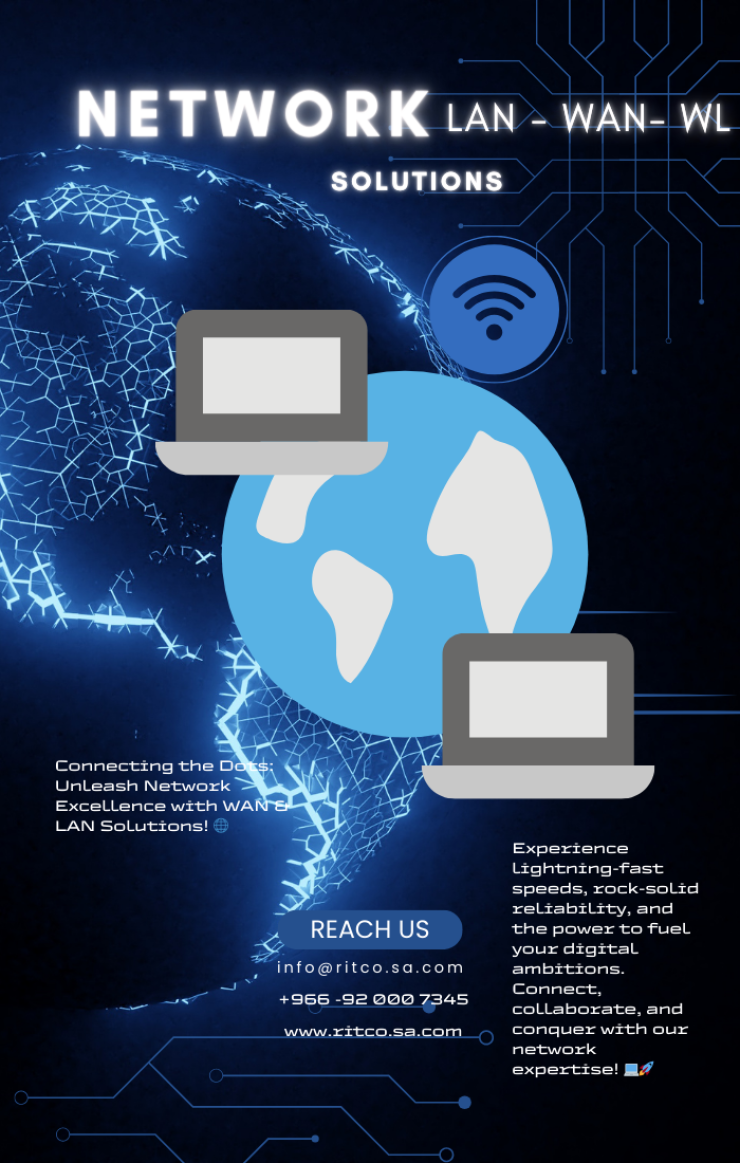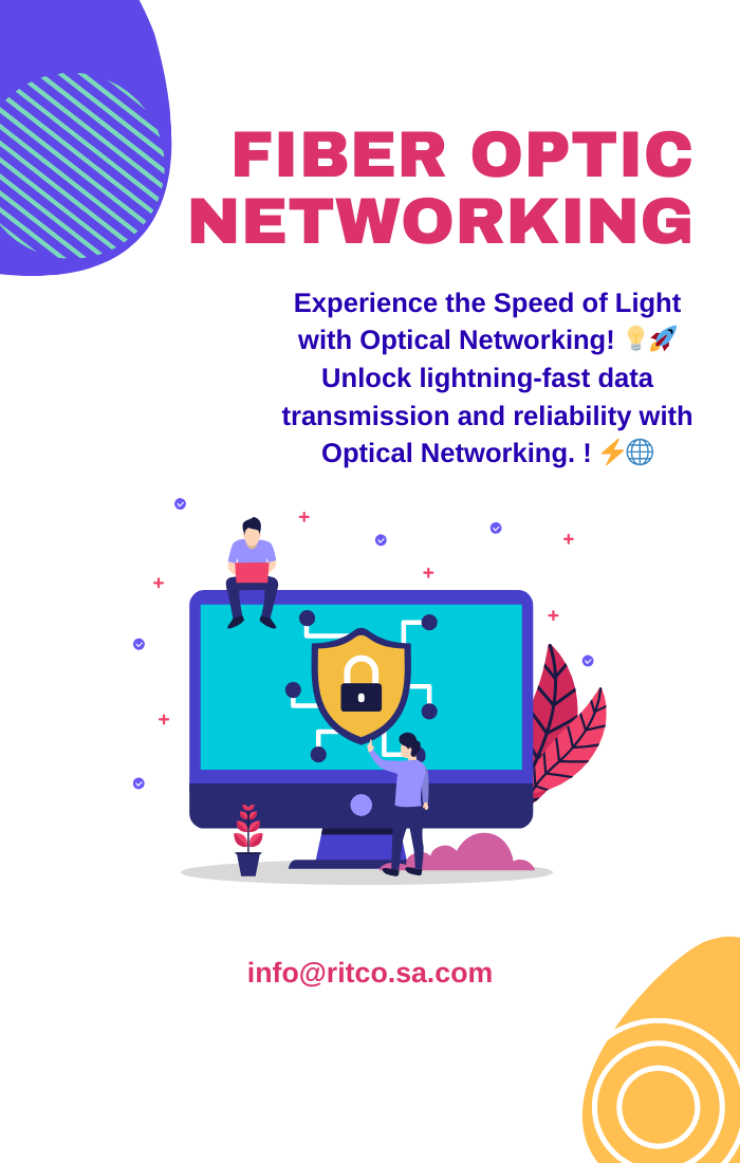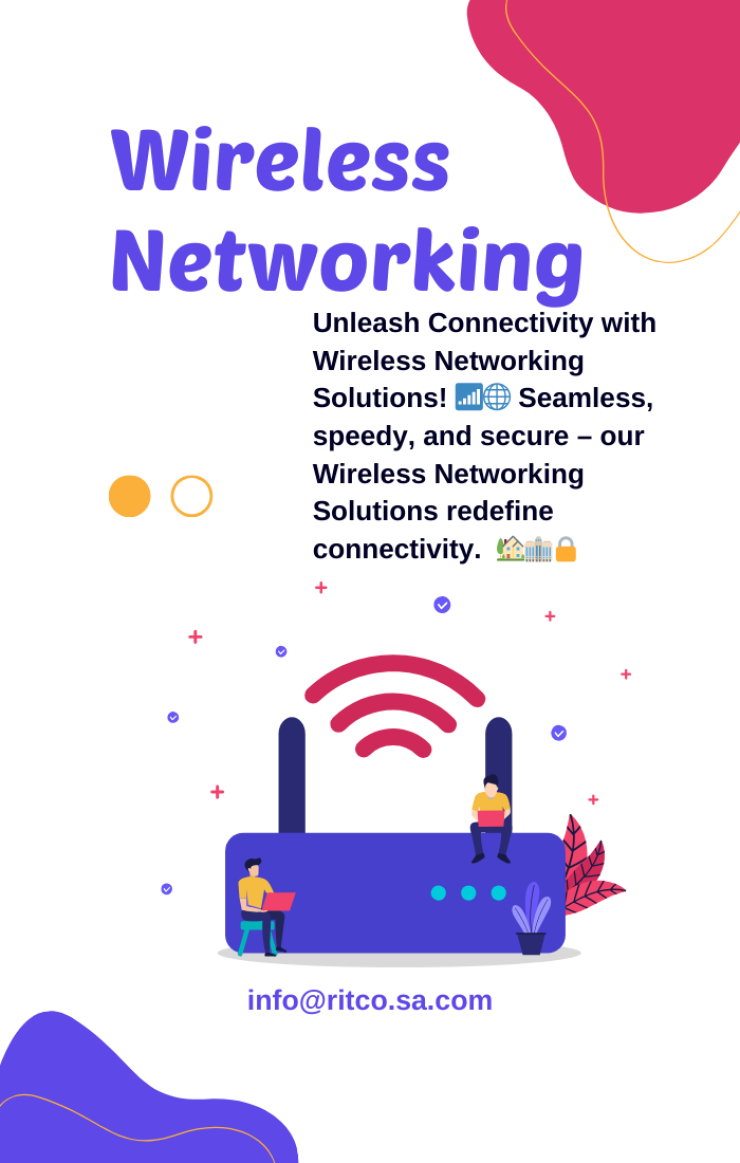
FTTD Solutions
FTTD Solutions: Introduction: RITCO introduces
Fiber-to-the-Desk (FTTD) Solutions, redefining workplace connectivity. Elevate
your office network with high-speed, reliable, and secure optical networking.
Available Products or Subscriptions:
- Basic
FTTD Setup
- Premium
FTTD Setup with Managed Services
- Custom
FTTD Solutions for Specialized Needs
Key Features:
- Direct
fiber connection to individual workstations for unmatched speed.
- Enhanced
data security with isolated connections for each user.
- Simplified
network management and troubleshooting.
Business Benefits:
- Boost
employee productivity with rapid data access and transfer.
- Ensure
data privacy and compliance with dedicated connections.
- Streamline
IT operations with centralized control and monitoring.
Conclusion: RITCO's FTTD Solutions bring efficiency and security
to your workspace, transforming the way your business operates.
What is Optical Networking?
Optical networking represents a revolutionary paradigm in
the world of telecommunications and data transmission. It leverages light
signals to transmit vast amounts of data over optical fibers, enabling unparalleled
speed, capacity, and efficiency in modern communication systems.
At its core, optical networking involves the use of optical
fibers made from high-quality glass or plastic materials. These fibers are
designed to carry light signals, which travel over great distances with minimal
signal degradation. Unlike traditional copper-based communication systems,
optical networking harnesses the power of light, allowing for data to be
transmitted as pulses of light.
The process begins with an optical transmitter that converts
electrical signals into light signals, utilizing lasers or light-emitting
diodes. These light signals are then sent into the optical fibers, where they
travel by reflecting off the internal walls of the fiber. The remarkable
property of total internal reflection keeps the light signals contained within
the fiber, minimizing losses and maintaining signal integrity.
Optical networking is widely utilized across various
domains, including telecommunications, internet service providers, data
centers, and more. The technology's ability to transmit large volumes of data
over long distances at incredible speeds has made it a cornerstone of the
digital age. From enabling seamless video streaming and online gaming to
supporting critical business applications and cloud computing, optical
networking underpins the backbone of modern communication infrastructure.
Benefits of Optical Networking:
- High
Speed: Optical networking offers gigabit and even terabit transmission
speeds, ensuring rapid data transfer for applications that demand
real-time performance.
- High
Capacity: Optical fibers can carry an immense amount of data simultaneously,
accommodating the increasing demands of data-intensive applications.
- Low
Latency: Minimal signal delay ensures swift responsiveness for
applications sensitive to delays, such as video conferencing and online
gaming.
- Long
Distances: Optical signals can travel thousands of kilometers without
significant loss, making it suitable for long-distance communication.
- Security:
Optical signals are challenging to intercept, enhancing the security of
transmitted data.
In conclusion, optical networking represents a
transformative advancement in the realm of communication technology. Its
ability to harness light for high-speed, high-capacity data transmission has
redefined the possibilities of modern connectivity. As our world becomes
increasingly reliant on digital communication, optical networking continues to
drive innovation and shape the future of how we connect and share information.














